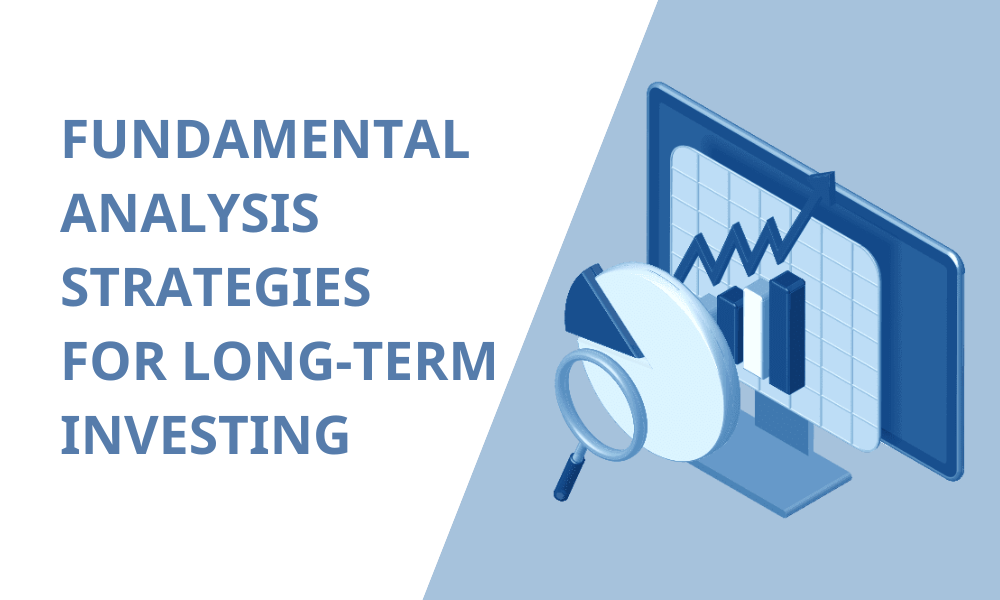Investing can be a complex maze, and smart players always have a map. Fundamental analysis strategies for long-term investing serve as that map, guiding you to potential treasure while sidestepping pitfalls. Here’s the stark truth: knowing the ins and outs of equity valuation isn’t just smart; it’s essential for securing your financial future. I unpack the tools you need to get it right – because if you aim to thrive, not just survive, understanding balance sheets and spotting growth trends is where your journey begins. Take a dive with me as we cut through complicated jargon, dig deep into financial statements, and decipher what drives real value in the stock market. Ready to become the investor who stands the test of time? Let’s get started.
Embracing the Fundamentals: Equity Valuation Techniques and Statement Analysis
Mastering Equity Valuation for Long-Term Gain
Picture this: you’re deciding which company will earn you more money years from now. There’s a smart way to figure that out. It’s called equity valuation. It’s like playing detective with a company’s money story to know if it’s worth your hard-earned cash.
What are some key equity valuation techniques? They’re methods to calculate what a share is truly worth. Think of them as tools like a ruler or a calculator. They help us measure a company’s real value versus the current price. The goal? Buy stocks for less than they’re worth and sell them for more.
Let’s dive into a popular valuation tool: the price-to-earnings ratio (P/E). Simply put, P/E lets us compare dollar to dollar. It shows how much we pay for one dollar of a company’s earnings. Lower P/E could mean a company’s stock is on sale. Start there, and you’re on your way to smarter choices.
Dissecting Financial Statements for a Health Check
Now let’s get our hands dirty. To know if a company’s fit for your money, peek at its financial statements. They’re like a health report card for companies.
What is financial statement analysis? It’s digging through balance sheets, income statements, and cash flows. Think of it as checking the company’s blood pressure, heart rate, and oxygen levels. We want green lights across the board.
The balance sheet tells us about debt and what a company owns. The income statement shows if the company makes more than it spends. And, cash flow is king; it tracks the actual cash coming in and out. You need all three to see the full picture.
Looking at these, we see the story behind the numbers. We scout for debt-to-equity ratio too high? That’s like too much weight on your shoulders. Can’t have that. Analyzing profitability ratios tells us if the company can turn a good profit.
All this number crunching? It sets you up to pick companies with strong roots. And strong roots often lead to lush money trees down the road.
So, there you have it. We’ve suited up and dove deep into the world of financial wits. Equity valuation and statement sleuthing are your secret sauce for choosing long-term winners. Keep these tools in your belt, and you’ll watch your investments grow from seedlings to mighty oaks.
Crafting a Robust Investment Strategy: Growth Potential and Competitive Edge
Decoding Economic Moats and Sustainable Growth
In the world of investing, “economic moat” is a big deal. It’s the secret sauce that keeps a company ahead of its rivals for a long time. Think of it like a castle’s moat that keeps enemies out. A strong moat makes a business tough to beat and often means more cash in the long run. We look for these winners because they often stay on top.
Now, how do we spot these economic moats? Look at what the company does better than others. Patents, brand strength, or lower cost supplies can be moats. They’re not always easy to spot, but they’re worth the hunt. They keep profits safe when times get tough.
Sector Trends and Profitability: Tools for the Informed Investor
Investing smart means knowing the lay of the land. And by that, I mean knowing your market sectors inside out. Tech, healthcare, energy — they’re all different beasts with their own rules. Use tools like tracking revenue growth and EPS. They help us see if a sector’s up and coming or if it’s taking a nap.
For example, let’s say tech’s booming. It might be a good bet, right? But hold your horses. You’ve got to check the EPS to see if those tech firms are really making more money. And don’t forget about dividend yield and the P/E ratio. They can tell you if you’re getting a good deal on the stock or if it’s overpriced. You want to buy shares when they’re like a fine steak on sale — high quality, low price.
Making money in stocks isn’t just about buying low and selling high. It’s about understanding what you buy. Use the tools, scout for moats, and always keep an eye on the sector trends. Stick with me, and we’ll dive deeper into knowing your stuff — and making those savvy investment moves that pay off big time.
The Numbers Game: Ratios, Valuation Metrics, and Cash Flow Models
The Significance of Ratios in Financial Prognosis
Ratios tell us so much in just a few numbers. They make hard facts easy to get. Think of them as the special code for a company’s story. Big terms, like profitability ratios analysis or debt-to-equity ratio, might seem tough, but they’re not. Profitability ratios? They check if a company really makes money. A high debt-to-equity ratio? Watch out, it means more debt than what’s safe.
I give a big thumbs up to the price to earnings ratio (P/E) and book value per share, too. P/E shows if a stock’s price makes sense with its earnings. Book value is what you get if a company sells all assets and pays all debts. Simple, right?
DCF and Intrinsic Value: The Core of Investment Analysis
Let’s get down to the heart of it: discounted cash flow (DCF) and a stock’s true worth, its intrinsic value. Intrinsic value estimation is like finding buried treasure worth. How? By guessing future cash and using a discount rate to make it today’s money.
Think of DCF as your time machine for cash. It uses smart guesses to bring future cash flow back to today. This helps us decide ‘buy’ or ‘bye’ on a stock. We need to nail this to win big in investing. It’s all about paying the right price for a bright future.
Just remember, numbers need a story and a story needs numbers. Use both for a winning game plan.
Beyond the Balance Sheet: Qualitative Factors Shaping Investments
Corporate Governance and ESG: Impacts on Investment Decisions
Imagine you’re buying a house. You check not just the building, but the whole area, right? Investing is similar. You look beyond numbers to see the whole picture. This includes corporate governance and ESG factors.
So, what is corporate governance? It’s how a company is run. It includes the rules and actions that control the company. Strong governance can mean a strong company. It makes sure that a company does not make choices that could hurt it or its investors.
And ESG? That stands for Environmental, Social, and Governance. Investors care about these today more than ever. Companies that do well with ESG can often do well with money too. They manage risks better and can keep going when things get tough. They are like the strong brick houses of investing. If you want to know more about how ESG affects stock performance, check out this exciting read: “ESG Investing: A Path to Sustainable Returns.”
Let’s talk about corporate governance review. What should you look for? Well, first, who runs the show? A good leader can make a huge difference. They can steer a company through good and bad times. And the board of directors? They should keep the leader in check. They need to have the company’s best interest in mind.
Next, ESG factors in investing. Things like how green a company is, or how it treats workers, matter. They can change how much you should pay for a stock. Companies with strong ESG scores might avoid big problems later. They are like the careful drivers in investing.
Business Model Viability: Assessing Longevity and Competitiveness
Now, how do you tell if a business will last? Peek into their business model. It’s like the engine of a car. If it’s strong, it can go far. Business model viability means asking, “Can this business keep winning?” Let’s dig in.
For a strong model, look for three things: what they offer, how they get money, and if they have what it takes to stay ahead. A company should have products or services that people want. It must also have a smart way to make money from them. Think of companies that have been around for years. They adapt and keep offering what people need.
Then think about competitive advantage factors. A company with an “economic moat” can fight off rivals. It’s like having a castle with a big moat. Your castle—the business—is safe from attacks. Economic moats can be things like a well-known brand, patents, or even special know-how.
Finally, look at their customer base. Is it growing? Is it loyal? Think of your favorite local restaurant where everyone knows your name. That’s loyalty. And it keeps businesses going long-term.
So, when you invest, it’s not just about the numbers. Look at how a company is run. See if they care about the world and their people. And check if their business can last and beat rivals. That’s the way to smart investing.
In this blog, we’ve explored key ways to value stocks and assess company health. We looked at equity valuation and dove into financial statement analysis. We broke down investment strategies and covered growth, moats, and sector trends. We even tackled ratios and cash flow models, showing their role in predicting financial success.
To wrap up, mastering these topics takes time but is crucial for smart investing. Besides the numbers, always weigh in how a company runs and its role in society. Remember, the best investors see beyond just the balance sheet. Stay informed, keep learning, and you’ll make wise choices that could pay off big.
Q&A :
What are the key components of fundamental analysis for long-term investment?
Fundamental analysis is a meticulous approach that involves examining the core factors that impact a company’s actual value and potential for growth. Key components include examining a company’s financial statements, understanding its revenue, profit margins, earnings growth, and cash flow. Additionally, fundamental analysts look at factors like the company’s management team, industry conditions, market share, competitors, and potential for future growth. Evaluating economic indicators and considering the overall market or economic environment also plays a crucial role in fundamental analysis.
How does analyzing a company’s financial health contribute to investment decisions?
Analyzing a company’s financial health is crucial for making informed investment decisions. This involves a deep dive into the company’s balance sheet, income statement, and cash flow statement. Investors gauge the company’s solvency, liquidity, and operational efficiency by evaluating metrics such as debt-to-equity ratio, current ratio, return on equity, and free cash flow. A strong financial health suggests that the company is well-positioned to survive market adversities, fulfill its obligations, and invest in growth opportunities, thus making it a potentially solid choice for long-term investing.
How do different market conditions affect fundamental analysis strategies?
Different market conditions can significantly influence fundamental analysis strategies. During a bullish market, analysts might focus on identifying companies that have strong growth prospects and are likely to outperform the market. In contrast, bearish conditions might shift the focus towards value investing and looking for companies that are undervalued by the market. Additionally, during periods of economic uncertainty, investors may prioritize companies with strong balance sheets and stable earnings over high-growth but volatile companies. Adapting fundamental analysis strategies to align with the prevailing market conditions can help investors make better-informed investment choices for the long-term.
Can fundamental analysis help in determining the intrinsic value of a stock?
Yes, fundamental analysis is a cornerstone method for determining the intrinsic value of a stock. This involves evaluating a company based on its financial statements, industry outlook, management effectiveness, and economic factors to calculate its true value independent of current market prices. By forecasting future earnings and discounting them back to their present value, often through models like Discounted Cash Flow (DCF), investors can arrive at an estimate of a stock’s intrinsic value. Comparing this value to the current market price can help investors decide if a stock is overvalued, undervalued, or fairly priced.
What are some common mistakes to avoid in fundamental analysis for long-term investing?
Engaging in fundamental analysis requires meticulous attention to detail and the ability to look at the bigger picture. Some common mistakes to avoid include focusing too narrowly on short-term earnings reports and overlooking long-term growth potential, ignoring macroeconomic trends and industry dynamics, being swayed by market sentiment rather than sticking to hard data, and failing to re-evaluate the analysis when new information becomes available. Additionally, over-relying on a single financial metric instead of a comprehensive evaluation can lead to an incomplete analysis. Avoiding these pitfalls can improve the accuracy of fundamental analysis and the success of long-term investment strategies.






